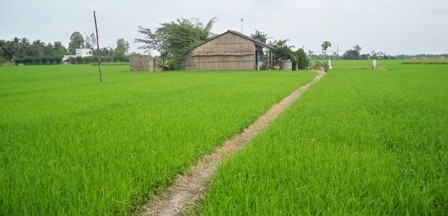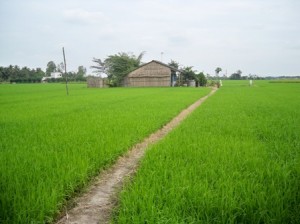Long An’s stunning and natural landscape has earned it recognition not only in Vietnam but all over the world. And while its natural beauty is already an attraction, its interesting history and rich culture as well has elevated it even more to the ranks of world-class tourist destinations.
Long An is a province in the Mekong Delta area located about 45 kilometers West of Ho Chi Minh City. To its North are Tay Ninh and Cambodia, Ho Chi Minh City to its East, Tien Giang to the South, and bordered by Dong Thap Province to the West. It is culturally diverse, with four religions believed by the people, namely Buddhism, Catholicism, Protestant and Cao Dai. It is also generally agricultural, with big fruit orchards, lush rice fields, and a diverse flora and fauna abounding in the area.
Long An’s Oc Eo culture is an old and mysterious part of its history which significantly contributed to its worldwide fame. It started in the 1st – 6th century with a combination of Indian influence. The province has 20 pre-historic sites; 100 Oc Eo cultural sites; and 90 historical and cultural sites which yielded 12,000 artifacts. Most of these locations are even national heritage sites, like the Binh Ta site which started between the 1st – 7th century A.D., before pre-historic and proto-historic periods even started. Built under the Phu Nam Kingdom, Binh Ta is a complex which displays the architectural and archaeological sites of Go Xoai, Go Don and Go Nam Tuoc.
___________________________________________________________________________________
The Go Xaoi Temple was a ceremonial site of the Phu Nam residents used to practice their religion Brahmanism. It contains the statues of the gods Shiva and Vishnu; holy objects Linga and Yoni; and a gold leaf document of Buddhist prayers written in Sanscrit letters. The Nguyen Huyn Duc Tomb is one of the first tombs built in Long An. It was built as early as 817 and is still mysteriously intact even today. Nguyen Huyn was the founder of the Nguyen Dynasty, thus a temple constructed in his honor.
Long An is also home to the famous Hundred-Column House. It was built between 1901-1903 with the architectural design of Hue capial and Nguyen dynasty which earned its fame in the first place. It has an area of 882 sq. m. and made entirely of wood. The structure is made up of two main chambers and two sub-chambers. The beams are decorated with mortar and pestle which is equivalent to Yin and Yang and symbolizing harmony. Other traditional Vietnamese decorations of the house include: four sacred animals (dragon, unicorn, turtle and phoenix); four seasons; eight types of ceremonial or ancestor worship fruits; and Western objects like roses, squirrels and vines.
The cajeput forest is an eco-tourism site that is home to different kinds of birds and medicinal herbs in an 800-hectare area. Specialty foods are also sold here, as well as souvenirs like honey, dried fish and herbal medicine which tourists can bring home to remember Long An by. Tan Lap Floating Village is a 135-hectare area of untouched nature, enveloped by an even bigger 500 hectares of pure beauty. Binh An drum-making village in Thu Thua District is famous for preserving the art of drum-making for many generations past.
When it comes to food, Long An also excels. Among the popular dishes in the province are canh chau ca chot or sour soup with local fish, ca loc nuong trui or baked snake-headed fish and lau man or hot pot.
From 2013 up to this year, Long An experienced an increasing number of visitors, both locally and internationally. As part of its 30% target growth rate for its tourism industry, it has been formulating projects since 2011 and effective until 2015. These include attracting investors into the province and constructing eco-tourism sites like an entertainment park in Duc Hua Town, cultural park in Tan An City, Tan Lap Floating Village in Moc Hoa District and Rach Cat Military Post in Can Duoc District.
Long An is blessed with a rich history and culture that makes it an attraction to tourists from all over the world. Its cuisine along is a symbol of its simple but interesting character. All in all, its combination of natural and man-made beauty is something worth visiting and remembering for.

